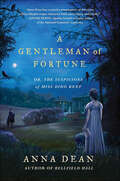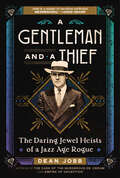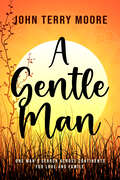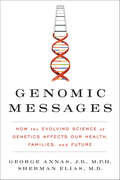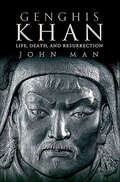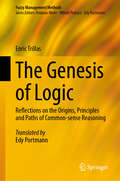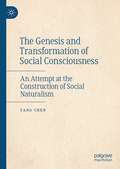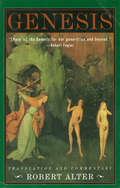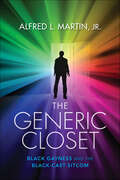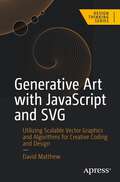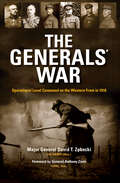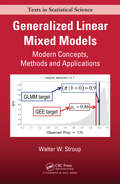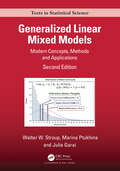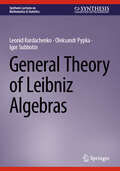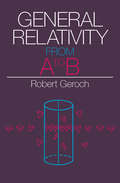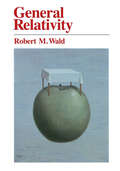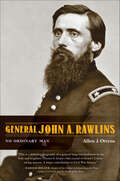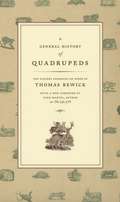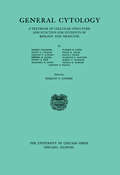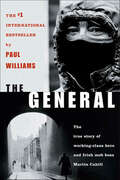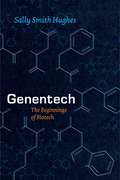- Table View
- List View
A Gentleman of Fortune: Or, The Suspicions of Miss Dido Kent (Dido Kent Investigations #2)
by Anna DeanWith all the charm of a Georgette Heyer novel, the sequel to Bellfield Hall finds Miss Dido Kent vacationing at the home of her cousin. When a neighbor passes away quite suddenly, Dido feels she is ideally placed to observe the reaction of the community, but her suitor, Mr. William Lomax, feels otherwise. As Dido presses on, she learns more about the dirty dealings among the upper classes of Surrey than even she could have imagined. Anna Dean has crafted a delightful historical mystery series; the next best thing to reading Jane Austen.
A Gentleman from Japan: The Untold Story of an Incredible Journey from Asia to Queen Elizabeth’s Court
by Thomas LockleyAn incredible sea story that turns the Age of Exploration on its head, following the first Japanese man to set foot on North America and England. On November 12, 1588, five young Asian men—led by a twenty-one-year-old called Christopher—traveled up the River Thames to meet Queen Elizabeth I. Christopher&’s epic sea voyage had spanned from Japan, via the Philippines, New Spain (Mexico), Java and Southern Africa. On the way, he had already become the first recorded Japanese person in North America. Now Christopher was the first ever Japanese visitor to England, and no other would leave such a legacy for centuries to come. The story of Christopher is almost utterly forgotten and has never been fully told before.A Gentleman from Japan is a fast-paced, historical narrative of adventure, cross-cultural endeavor, intellectual exchange, perseverance, espionage and conflict in the Age of Exploration.
A Gentleman and a Thief: The Daring Jewel Heists of a Jazz Age Rogue
by Dean JobbCatch Me If You Can meets The Great Gatsby in this Jazz Age tale of a master jewel thief who charmed celebrities and hobnobbed with New York’s millionaires while planning audacious heists to relieve them of their treasures.A skilled con artist and perhaps one of the most charming, audacious burglars in history, Arthur Barry slipped in and out of the bedrooms of New York’s wealthiest residents, even as his victims slept only inches away. He befriended luminaries such as the Prince of Wales and Harry Houdini and became a folk hero, touted in the press as “the greatest jewel thief who ever lived” and an “aristocrat of crime.” In a span of seven years, Barry stole diamonds, pearls, and other gems worth almost $60 million today. Among his victims were a Rockefeller, an heiress to the Woolworth department store fortune, an oil magnate, Wall Street bigwigs, a top executive of automotive giant General Motors, and a famous polo player.Dean Jobb—hailed by Esquire magazine as “a master of narrative nonfiction”—once again delivers a stylishly told, high-speed ride. A Gentleman and a Thief is also a love story. Barry confessed to dozens of burglaries to protect his wife, Anna Blake (and was the prime suspect in scores of others). Sentenced to a twenty-five-year term, he staged a dramatic prison break when Anna became seriously ill so they could be together for a few more years as fugitives.With dozens of historic images, A Gentleman and a Thief is page-turning escapism that sparkles with insight into our fascination with jewel heists and the suave, clever criminals who pull them off.
A Gentle Man
by John Terry MooreAs a young gay man growing up in southwest Victoria, Nick Williams leads a charmed life. Life on the family farm gives him a sense of purpose. His supportive parents are loving and affectionate. And his best friend Aaron is always around to help him get out of trouble. But when his father dies a few days before Nick&’s eighteenth birthday, it changes the course of Nick&’s life. From rural Australia to India, Nick builds a life as a successful businessman only to watch it crumble in a way he never thought possible. Running from betrayal and heartbreak, Nick returns to the land and people who know him best, but sometimes you have to hit rock bottom to be able to see what was in front of you all along.
The Gentle Art of Swedish Death Cleaning: How to Free Yourself and Your Family from a Lifetime of Clutter (The Swedish Art of Living & Dying Series)
by Margareta Magnusson*The basis for the wonderfully funny and moving TV series developed by Amy Poehler and Scout Productions* A charming, practical, and unsentimental approach to putting a home in order while reflecting on the tiny joys that make up a long life.In Sweden there is a kind of decluttering called döstädning, dö meaning &“death&” and städning meaning &“cleaning.&” This surprising and invigorating process of clearing out unnecessary belongings can be undertaken at any age or life stage but should be done sooner than later, before others have to do it for you. In The Gentle Art of Swedish Death Cleaning, artist Margareta Magnusson, with Scandinavian humor and wisdom, instructs readers to embrace minimalism. Her radical and joyous method for putting things in order helps families broach sensitive conversations, and makes the process uplifting rather than overwhelming. Margareta suggests which possessions you can easily get rid of (unworn clothes, unwanted presents, more plates than you&’d ever use) and which you might want to keep (photographs, love letters, a few of your children&’s art projects). Digging into her late husband&’s tool shed, and her own secret drawer of vices, Margareta introduces an element of fun to a potentially daunting task. Along the way readers get a glimpse into her life in Sweden, and also become more comfortable with the idea of letting go.
Genomic Messages: How the Evolving Science of Genetics Affects Our Health, Families, and Future
by George Annas Sherman EliasTwo leaders in the field of genetics—a bioethicist-health lawyer and an obstetrician-gynecologist geneticist—answer the most pressing questions about the application of new genetics to our universal medicine and what personalized medicine means for individual healthcare.Breakthroughs in genetic research are changing modern medicine and pharmaceuticals. But what are these changes and how do they affect our individual care? Genomic Messages examines these groundbreaking changes and the questions they raise: What kind of specific medical innovation do we have to look forward to now and tomorrow? How will this “flood” of genetic messages change our lives, our interaction with our physicians and our healthcare system?Groundbreaking and provocative, Genomic Messages fuses the often conflicting worlds of medicine and law to provide information and insight that will impact the health choices of every one of us, from how medicine is practiced to concepts of privacy, confidentiality, and informed consent. Ultimately, it reveals how genetic information is changing how we think about ourselves, our health, and our future.
Genghis Khan: Life, Death, and Resurrection
by John ManGenghis Khan is one of history's immortals, alive in memory as a scourge, hero, military genius and demi-god. To Muslims, Russians and westerners, he is a murderer of millions, a brutal oppressor. Yet in his homeland of Mongolia he is the revered father of the nation, and the Chinese honor him as the founder of a dynasty. In his so-called Mausoleum in Inner Mongolia, worshippers seek the blessing of his spirit. In a supreme paradox, the world's most ruthless conqueror has become a force for peace and reconciliation.As a teenager, Genghis was a fugitive, hiding from enemies on a remote mountainside. Yet he went on to found the world's greatest land empire and change the course of world history. Brilliant and original as well as ruthless, he ruled an empire twice the size of Rome's until his death in 1227 placed all at risk. To secure his conquests and then extend them, his heirs kept his death a secret, and secrecy has surrounded him ever since. His undiscovered grave, with its imagined treasures, remains the subject of intrigue and speculation.This is more than just a gripping account of Genghis' rise and conquests. John Man uses first-hand experiences in China and Mongolia to reveal the khan's enduring influence. He has traveled the length of the empire. He spotlights the tension between Mongols and Chinese, who both claim Genghis' spirit. He is the first writer to explore the hidden valley where Genghis is believed to have died, and one of the few westerners to climb the mountain where he was likely buried.This stunning narrative paints a vivid picture of the man himself, the places where he lived and fought, and the passions that surround him still. For in legend, ritual and intense controversy, Genghis lives on.
The Genesis of Logic: Reflections on the Origins, Principles and Paths of Common-sense Reasoning (Fuzzy Management Methods)
by Enric TrillasThe Genesis of Logic addresses the principles of common-sense reasoning, which are employed in everyday decision-making processes and extend beyond deductive reasoning alone. Linked to language, logic inherits its flexibility. These are a few laws, the 'formal skeleton of reasoning,' based on the relationship of linguistic inference that, while needing to be represented in each context, allow for the consideration of non-comparable, orthogonal statements. By facilitating deduction and abduction, speculation emerges as a fundamental intellectual operation. As a whole, this work offers a new genetic-evolutionary perspective to reconsider Logic, a panoramic outlook that examines laws outside the skeleton as local laws, necessary for the validity of specialized reasoning. It moves away from the rigid reticular structure of sets of statements and views induction as the search for speculations, non-monotonic reasoning as speculative, and conjecture, only proven in finite Boolean algebras,that reasoning involves following paths of inference in a zigzag pattern, alternating between deduction and abduction.
The Genesis and Transformation of Social Consciousness: An Attempt at the Construction of Social Naturalism
by Yang ChenThis book focuses on the formation of human social consciousness and develops a naturalist approach to social normativity. Beginning from Marx's uncompleted concept of social consciousness, the book retrospects the studies about collective intentionality in the area of philosophy of mind and social ontology. Specifically, a reinterpretation of social consciousness with respect to collective intentionality can offer us a new, naturalistic approach to the social formation and normativity. According to the naturalistic approach, we can discern the inner structure of social consciousness as a systematic pattern of Intentionality. Social consciousness involves three levels of development: subjective, objective and absolute. With this new pattern of social consciousness, the “naturalism” of the young Karl Marx can be revived. And by grasping the most essential ability of human Intentionality as the source of social formation, it also makes an interdisciplinary study of social philosophyand philosophy of mind possible.
Genesis: Translation And Commentary
by Robert Alter"[Here is] the Genesis for our generation and beyond."—Robert Fagles Genesis begins with the making of heaven and earth and all life, and ends with the image of a mummy—Joseph's—in a coffin. In between come many of the primal stories in Western culture: Adam and Eve's expulsion from the garden of Eden, Cain's murder of Abel, Noah and the Flood, the destruction of Sodom and Gomorrah, Abraham's binding of Isaac, the covenant of God and Abraham, Isaac's blessing of Jacob in place of Esau, the saga of Joseph and his brothers. In Robert Alter's brilliant translation, these stories cohere in a powerful narrative of the tortuous relations between fathers and sons, husbands and wives, eldest and younger brothers, God and his chosen people, the people of Israel and their neighbors. Alter's translation honors the meanings and literary strategies of the ancient Hebrew and conveys them in fluent English prose. It recovers a Genesis with the continuity of theme and motif of a wholly conceived and fully realized book. His insightful, fully informed commentary illuminates the book in all its dimensions.
Genesis: The Covenant Comes to Life (Bringing the Bible to Life)
by John H. Walton Janet NygrenA series of Bible study guides following the format and content of the NIV Application Commentaries Series. Each study looks at the original meaning, bridging contexts, and contemporary significance of the text, and offers small group participants a better understanding and relevant application of the biblical material to their daily lives.
The Generic Closet: Black Gayness and the Black-Cast Sitcom
by Alfred L. Martin Jr.Even after a rise in gay and Black representation and production on TV in the 1990s, the sitcom became a "generic closet," restricting Black gay characters with narrative tropes.Drawing from 20 interviews with credited episode writers, key show-runners, and Black gay men, The Generic Closet situates Black-cast sitcoms as a unique genre that uses Black gay characters in service of the series' heterosexual main cast. Alfred L. Martin, Jr., argues that the Black community is considered to be antigay due to misrepresentation by shows that aired during the family viewing hour and that were written for the imagined, "traditional" Black family. Martin considers audience reception, industrial production practices, and authorship to unpack the claim that Black gay characters are written into Black-cast sitcoms such as Moesha, Good News, and Let's Stay Together in order to closet Black gayness.By exploring how systems of power produce ideologies about Black gayness, The Generic Closet deconstructs the concept of a monolithic Black audience and investigates whether this generic closet still exists.
Generative Art with JavaScript and SVG: Utilizing Scalable Vector Graphics and Algorithms for Creative Coding and Design (Design Thinking)
by David MatthewThis book introduces you to the exciting world of generative art and creative coding through the medium of JavaScript and Scalable Vector Graphics (SVG). Using tried and trusted techniques, you’ll tackle core topics such as randomness and regularity, noise and naturalistic variance, shape and path creation, filter effects, animation, and interactivity. In the process you’ll learn SvJs, a JavaScript library that closely mirrors the SVG spec and makes scripting SVG intuitive and enjoyable. You’ll also study the craft of generative art and its creative process, along with JavaScript fundamentals, using modern ES6+ syntax. Each chapter will build upon the previous one, and those completely new to programming will be given a primer to help them find their feet. Generative Art with JavaScript and SVG will take you on a fun journey, peppered with plenty of sketches throughout, designed not only to explain, but to inspire. You Will: • Structure and randomise compositions. • Understand the different types of randomness and their probability distributions. • Create organic variance with the SvJs Noise module. • Apply SVG filter effects in a generative fashion. • Explore different approaches to animating with SVG. • Make your compositions dynamic and interactive. WHO IS IT FOR: Web developers and designers and creative coders with an interest in digital and generative art as well as artists who are interested in learning to code with JavaScript.
Generations: The Real Differences Between Gen Z, Millennials, Gen X, Boomers, and Silents—and What They Mean for America's Future
by Jean M. TwengeA groundbreaking, &“lavishly informative&” (The New York Times) portrait of the six generations that currently live in the United States and how they connect, conflict, and compete with one another—from the acclaimed author of Generation Me and iGen.Upending the conventional theory that generational differences are caused by major events, Dr. Jean Twenge analyzes data on 39 million people from robust national surveys—some going back nearly a century—to show that changes in technology are the underlying driver of each generation&’s unique makeup. In this revelatory work, Twenge outlines key shifts in attitudes and lifestyle choices that define each generation regarding gender, income, politics, race, sexuality, marriage, mental health, and much more. Surprising, engaging, and informative, Generations &“gets you thinking about how appreciating generational differences can, ironically, bring us together&” (Angela Duckworth, New York Times bestselling author). It will forever change the way you view your parents, peers, coworkers, and children, no matter which generation you call your own.
The Generals' War: Operational Level Command on the Western Front in 1918 (Twentieth-Century Battles)
by Major General David T. ZabeckiKnown as the War to End all Wars and the Great War, World War I introduced new forms of mass destruction and modern technological warfare. When the Bolsheviks pulled Russia out of the war in late 1917, the Germans turned their offensive efforts to the Western Front in an attempt to win the war in 1918. But as fresh American troops entered Europe, the strategic scales tipped against Germany.Much of how World War I played out turned on the plans and decisions of the senior-most German and Allied commanders. The Generals' War explores the military strategies of those generals during the last year of the Great War. These six very different men included Germany's Field Marshal Paul von Hindenburg and General Erich Ludendorff; France's Marshals Ferdinand Foch and Philippe Pétain; Great Britain's Field Marshal Sir Douglas Haig; and the United States' General John Pershing. Although history remembers none of them as great captains, these six officers determined for better or worse how World War I was fought on the battlefields of the Western Front between November 1917 and November 1918.The Generals' War is a landmark exploration of the generalship that shaped the very framework of modern warfare as we know it today and provides a comprehensive and detailed analysis on the senior commanders of the Great War.
Generalized Linear Mixed Models: Modern Concepts, Methods and Applications (Chapman & Hall/CRC Texts in Statistical Science)
by Walter W. StroupWith numerous examples using SAS PROC GLIMMIX, this text presents an introduction to linear modeling using the generalized linear mixed model as an overarching conceptual framework. For readers new to linear models, the book helps them see the big picture. It shows how linear models fit with the rest of the core statistics curriculum and points out the major issues that statistical modelers must consider.
Generalized Linear Mixed Models: Modern Concepts, Methods and Applications (Chapman & Hall/CRC Texts in Statistical Science)
by Walter W. Stroup Marina Ptukhina Julie GaraiGeneralized Linear Mixed Models: Modern Concepts, Methods, and Applications (2nd edition) presents an updated introduction to linear modeling using the generalized linear mixed model (GLMM) as the overarching conceptual framework. For students new to statistical modeling, this book helps them see the big picture – linear modeling as broadly understood and its intimate connection with statistical design and mathematical statistics. For readers experienced in statistical practice, but new to GLMMs, the book provides a comprehensive introduction to GLMM methodology and its underlying theory.Unlike textbooks that focus on classical linear models or generalized linear models or mixed models, this book covers all of the above as members of a unified GLMM family of linear models. In addition to essential theory and methodology, this book features a rich collection of examples using SAS® software to illustrate GLMM practice. This second edition is updated to reflect lessons learned and experience gained regarding best practices and modeling choices faced by GLMM practitioners. New to this edition are two chapters focusing on Bayesian methods for GLMMs.Key Features:• Most statistical modeling books cover classical linear models or advanced generalized and mixed models; this book covers all members of the GLMM family – classical and advanced models.• Incorporates lessons learned from experience and on-going research to provide up-to-date examples of best practices.• Illustrates connections between statistical design and modeling: guidelines for translating study design into appropriate model and in-depth illustrations of how to implement these guidelines; use of GLMM methods to improve planning and design.• Discusses the difference between marginal and conditional models, differences in the inference space they are intended to address and when each type of model is appropriate.• In addition to likelihood-based frequentist estimation and inference, provides a brief introduction to Bayesian methods for GLMMs.Walt Stroup is an Emeritus Professor of Statistics. He served on the University of Nebraska statistics faculty for over 40 years, specializing in statistical modeling and statistical design. He is a Fellow of the American Statistical Association, winner of the University of Nebraska Outstanding Teaching and Innovative Curriculum Award and author or co-author of three books on mixed models and their extensions.Marina Ptukhina (Pa-too-he-nuh), PhD, is an Associate Professor of Statistics at Whitman College. She is interested in statistical modeling, design and analysis of research studies and their applications. Her research includes applications of statistics to economics, biostatistics and statistical education. Ptukhina earned a PhD in Statistics from the University of Nebraska-Lincoln, a Master of Science degree in Mathematics from Texas Tech University and a Specialist degree in Management from The National Technical University "Kharkiv Polytechnic Institute."Julie Garai, PhD, is a Data Scientist at Loop. She earned her PhD in Statistics from the University of Nebraska-Lincoln and a bachelor’s degree in Mathematics and Spanish from Doane College. Dr Garai actively collaborates with statisticians, psychologists, ecologists, forest scientists, software engineers, and business leaders in academia and industry. In her spare time, she enjoys leisurely walks with her dogs, dance parties with her children, and playing the trombone.
General Theory of Leibniz Algebras (Synthesis Lectures on Mathematics & Statistics)
by Leonid Kurdachenko Oleksandr Pypka Igor SubbotinThis book discusses many interesting results have been obtained in Leibniz algebras over the past two decades. The authors not only summarize recent results and methods successfully used in Leibniz algebras, but also show new prospective horizons. Any mathematical theories have a number of natural problems that arise in the process of its development, and these problems quite often have analogues in other areas such as differential geometry, homological algebra, classical algebraic topology, noncommutative geometry, etc. With this in mind the authors describe the general structure of Leibniz algebras that have already been discovered. This approach allows readers to see which parts of the theory should be developed further and also shows the significant differences of Leibniz algebras from Lie algebras. Recent results that constitute the naturally evolving general theory of the subject are then explored.
General Relativity from A to B
by Robert Geroch"This beautiful little book is certainly suitable for anyone who has had an introductory course in physics and even for some who have not."—Joshua N. Goldberg, Physics Today "An imaginative and convincing new presentation of Einstein's theory of general relativity. . . . The treatment is masterful, continual emphasis being placed on careful discussion and motivation, with the aim of showing how physicists think and develop their ideas."—Choice
General Relativity: Structured Paternalism and The Landscape of Choice
by Robert M. Wald"Wald's book is clearly the first textbook on general relativity with a totally modern point of view; and it succeeds very well where others are only partially successful. The book includes full discussions of many problems of current interest which are not treated in any extant book, and all these matters are considered with perception and understanding."—S. Chandrasekhar "A tour de force: lucid, straightforward, mathematically rigorous, exacting in the analysis of the theory in its physical aspect."—L. P. Hughston, Times Higher Education Supplement "Truly excellent. . . . A sophisticated text of manageable size that will probably be read by every student of relativity, astrophysics, and field theory for years to come."—James W. York, Physics Today
General John A. Rawlins: No Ordinary Man
by Allen J. OttensNo one succeeds alone, and Ulysses S. Grant was no exception. From the earliest days of the Civil War to the heights of Grant's power in the White House, John A. Rawlins was ever at Grant's side. Yet Rawlins's role in Grant's career is often overlooked, and he barely received mention in Grant's own two-volume Memoirs. General John A. Rawlins: No Ordinary Man by Allen J. Ottens is the first major biography of Rawlins in over a century and traces his rise to assistant adjutant general and ultimately Grant's secretary of war. Ottens presents the portrait of a man who teamed with Grant, who submerged his needs and ambition in the service of Grant, and who at times served as the doubter who questioned whether Grant possessed the background to tackle the great responsibilities of the job. Rawlins played a pivotal role in Grant's relatively small staff, acting as administrator, counselor, and defender of Grant's burgeoning popularity. Rawlins qualifies as a true patriot, a man devoted to the Union and devoted to Grant. His is the story of a man who persevered in wartime and during the tumultuous years of Reconstruction and who, despite a ravaging disease that would cut short his blossoming career, grew to become a proponent of the personal and citizenship rights of those formerly enslaved. General John A. Rawlins will prove to be a fascinating and essential read for all who have an interest in leadership, the Civil War, or Ulysses S. Grant.
A General History of Quadrupeds: The Figures Engraved on Wood by Thomas Bewick
by Thomas BewickIn the late eighteenth century, the British took greater interest than ever before in observing and recording all aspects of the natural world. Travelers and colonists returning from far-flung lands provided dazzling accounts of such exotic creatures as elephants, baboons, and kangaroos. The engraver Thomas Bewick (1753–1828) harnessed this newfound interest by assembling the most comprehensive illustrated guide to nature of his day.A General History of Quadrupeds, first published in 1790, showcases Bewick’s groundbreaking engraving techniques that allowed text and images to be published on the same page. From anteaters to zebras, armadillos to wolverines, this delightful volume features engravings of over four hundred animals alongside descriptions of their characteristics as scientifically understood at the time. Quadrupeds reaffirms Bewick’s place in history as an incomparable illustrator, one whose influence on natural history and book printing still endures today.
General Cytology: A Textbook of Cellular Structure and Function for Students of Biology and Medicine
by Edmund V. CowdryThis volume was, at the time of publication, the largest and most comprehensive book on the subject of cytology, a branch of zoology which had grown considerably in the years before 1924. It was written by the foremost cytologists in the United States, including Robert Chambers, Edwin G. Conklin, Edmund V. Cowdry, Merle H. Jacobs, Ernest E. Just, Margaret R. Lewis, Warren H. Lewis, Frank R. Lillie, Ralph S. Lillie, Clarence E. McClung, Albert P. Mathews, Thomas H. Morgan, and Edmund B. Wilson.
The General: The True Story of Working-Class Hero and Irish Mob Boss Martin Cahill
by Paul WilliamsIn a twenty-year career marked by obsessive secrecy, brutality, and meticulous planning, Martin Cahill, a k a, The General, netted over 40 million pounds. His criminal record included assassination, kidnapping, bombings, and one of the world's largest art and gold heists! He was untouchable and fiercely loyal to his gang. Loved by the common man, his personal battle with the police made him a living legend. But Martin Cahill not only refused to respect the police, he refused to pay tribute to the IRA. And unlike the police who had to follow the letter of the law in their battle to bring down Ireland's most wanted, the IRA played by their own rules.At the Publisher's request, this title is being sold without Digital Rights Management Software (DRM) applied.
Genentech: The Beginnings of Biotech (Synthesis Ser.)
by Sally Smith HughesIn the fall of 1980, Genentech, Inc., a little-known California genetic engineering company, became the overnight darling of Wall Street, raising over $38 million in its initial public stock offering. Lacking marketed products or substantial profit, the firm nonetheless saw its share price escalate from $35 to $89 in the first few minutes of trading, at that point the largest gain in stock market history. Coming at a time of economic recession and declining technological competitiveness in the United States, the event provoked banner headlines and ignited a period of speculative frenzy over biotechnology as a revolutionary means for creating new and better kinds of pharmaceuticals, untold profit, and a possible solution to national economic malaise. Drawing from an unparalleled collection of interviews with early biotech players, Sally Smith Hughes offers the first book-length history of this pioneering company, depicting Genentech’s improbable creation, precarious youth, and ascent to immense prosperity. Hughes provides intimate portraits of the people significant to Genentech’s science and business, including cofounders Herbert Boyer and Robert Swanson, and in doing so sheds new light on how personality affects the growth of science. By placing Genentech’s founders, followers, opponents, victims, and beneficiaries in context, Hughes also demonstrates how science interacts with commercial and legal interests and university research, and with government regulation, venture capital, and commercial profits. Integrating the scientific, the corporate, the contextual, and the personal, Genentech tells the story of biotechnology as it is not often told, as a risky and improbable entrepreneurial venture that had to overcome a number of powerful forces working against it.
